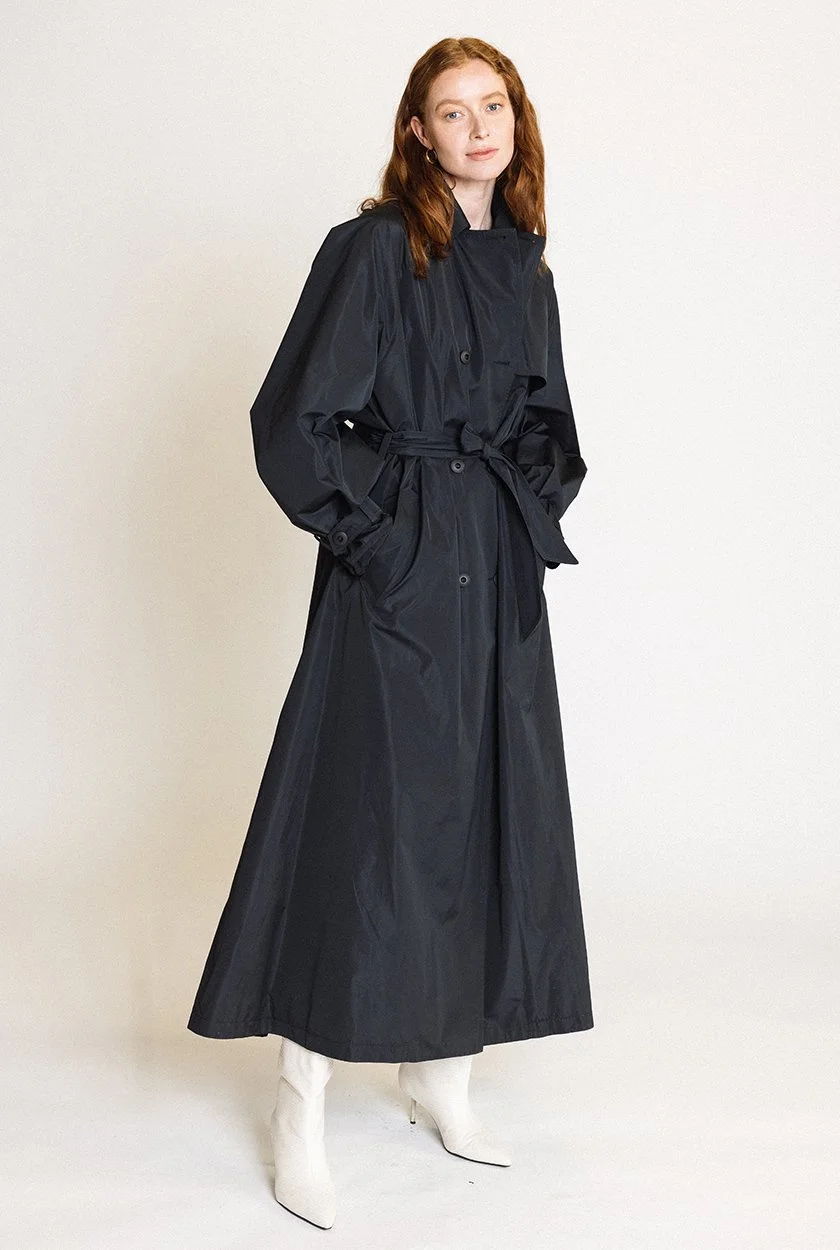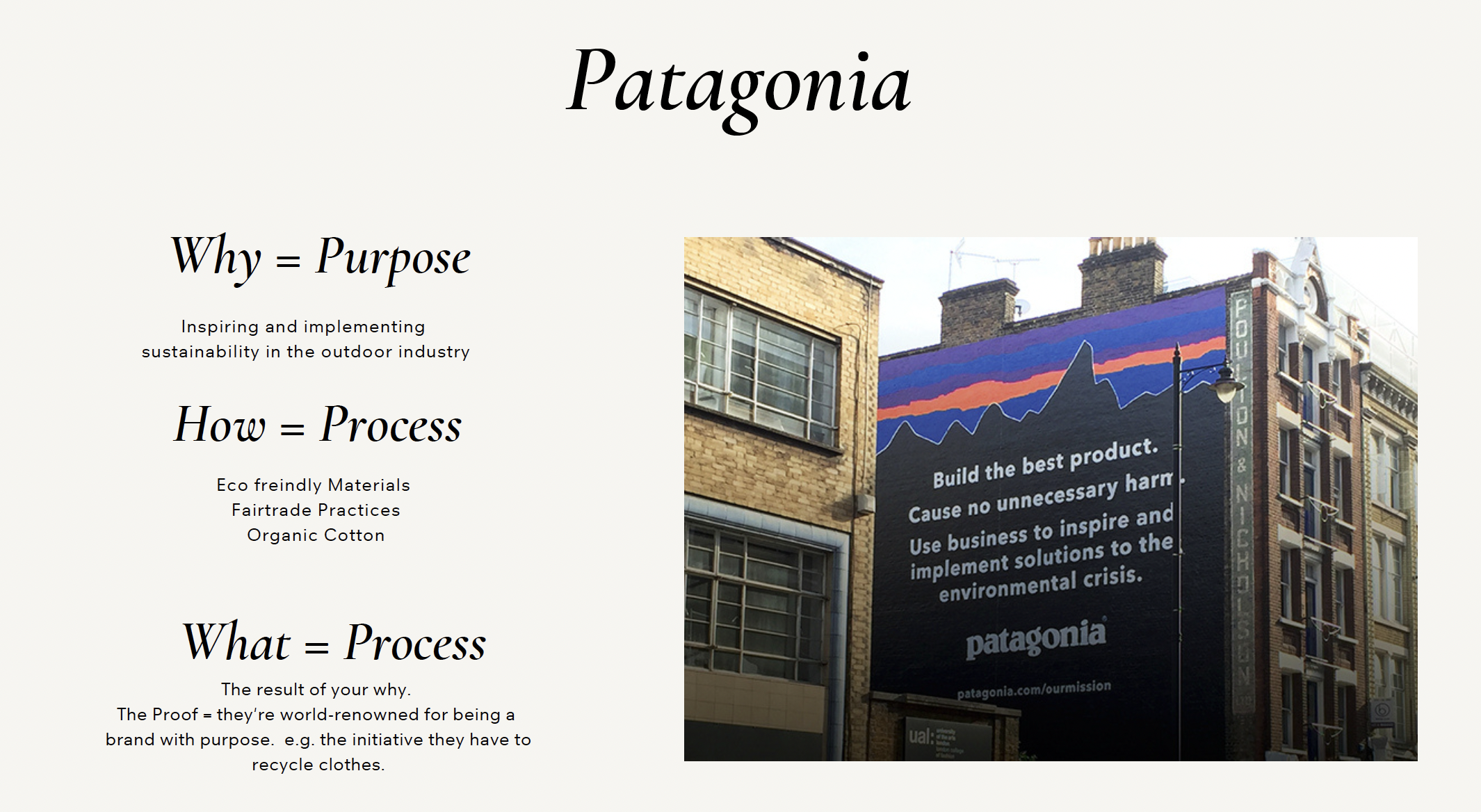CREATING A SUSTAINABLE FASHION BRAND
A lot of businesses come to us with the want to build a sustainable brand. When we ask them what makes their business sustainable, there’s a lot of umming and ahhing. That was not the case with outerwear brand Wilschau. Olga now talks to us about how she has built a new sustainable fashion brand from scratch during a global pandemic and what the future brings for the industry.
What made you want to set up Wilschau?
My relationship with fashion started a long time ago, maybe when I was born… Just kidding, but frankly speaking, it has been a decade since I have changed my career path from investment banking into fashion, and it was a long route of self-development and education. Wilschau Outerwear as we see it today was born thanks to my lifestyle in London. I was missing elegant and practical clothing for every day which would protect me from the windy and rainy days, which would also be light and feminine.
Tell us about your designs and what inspired your collection
Wilschau was inspired by the very first garment in history, the cape or cappa, which in the Latin language means “to escape”, so you throw it on and run to complete your daily commitments… To pick your kids from school or shopping or even to go on a date. But because the cape on its own is not very practical, we originated our trench cape which ticks all the boxes from a design and practical perspective. Also the parka, despite it being sporty, has movements and the features of the dress. To sum up, the idea of design is to elevate the every day to the iconic.
What makes Wilschau outerwear sustainable?
People, product, process and the place. We are selectively working with science-based materials and carefully produce our garments in London. We don't have overstock and offer both the long-lasting design and the product. As an ethically–conscious startup, sustainability is how you do business and supporting actions to protect the planet are key.
What does sustainability mean to you?
This is a difficult question. There can be different points of view. Sustainability is not one thing on its own, many components in it are interlinked between each other. For me as an entrepreneur, sustainability is much more circular than a linear approach, when you eliminate waste through a redesign. It is employment rights, human rights, equality. The wages are so low, and fast fashion created the notion of cheap labor, which is not sustainable. The ability to pay the actual cost of the production is sustainable. Transparency is also important to be capable of measuring the impact of the positive things the brand created, as well as the negative.
Which other brand voices do you admire and why?
Patagonia. They are using recycled materials, respect labor rights and are also famous for their worn-to-wear initiative. This platform was built to give their customers to sell or buy second-hand Patagonia clothes and also repair them in-house. As you know, reselling clothes is becoming a new retail trend, but instead of using other platforms, Patagonia created their own upcycling stream, which is fantastic. Worn Wear was launched online in 2017 and since then, more than 150 000 garments have been repaired.
What does the future of sustainable fashion look like?
Regulations, international policy, environmental tax give the opportunity to work sustainably. The players are very much in need of guidance and a lot of collaboration between governance and business is required. The fashion industry is the second most polluting industry and of course, the notion of sustainable fashion doesn’t exist. There are a lot of opportunities for companies to reduce their footprint and carbon emissions at the mill, extend the cycle of fashion, invest in material science, and instead of creating virgin fabric, utilise the waste which is already here. Stella McCartney is another brand which I admire. The brand is investing a lot in renewable agriculture. They bought the land in Sweden to grow their own forest to produce the viscose for their garments. They take care of the soil, the crop, and the territory around it. This business initiative allows us to protect the planet from deforestation and save the rainforest, animals, and insects living there. I think this is the future.
What are the biggest challenges you’ve faced as an entrepreneur?
I must say, I have not had any specific problems as an entrepreneur. I was lucky enough to meet good people who helped me throughout the journey to build Wilschau digitally.
A social post Alexandra Lunn Studio created for Wilschau, 2021
What advice would you give to anyone who is thinking of starting a brand that has a purpose?
Every business has a choice, and it is important to make your choices at the very beginning. I would advise you to start slow, be selective with fabrics you use as this is the major factor for fashion brands. Follow the guidance: human rights, pay the actual cost for the garment production, source ethical materials, don’t invest in the stock, select your packaging, and stay curious.
What successes have you had over the last couple of years since you launched?
I think it is too soon to claim success, but definite success is the product and that the brand is slowly taking its place on the market. We are receiving a lot of recognition for being who we are. Another success is to continue working within our value system taking into consideration people we work with and the planet.
Is the 10% discount still on and if so, how can people buy it?
Yes, there is a 10% discount for all garments, which will be finished by the end of the Spring, so please use the opportunity to get one of the coats to stay sleek during the summer and under the rain. Follow Olga here, see more of her work and contact her here.





